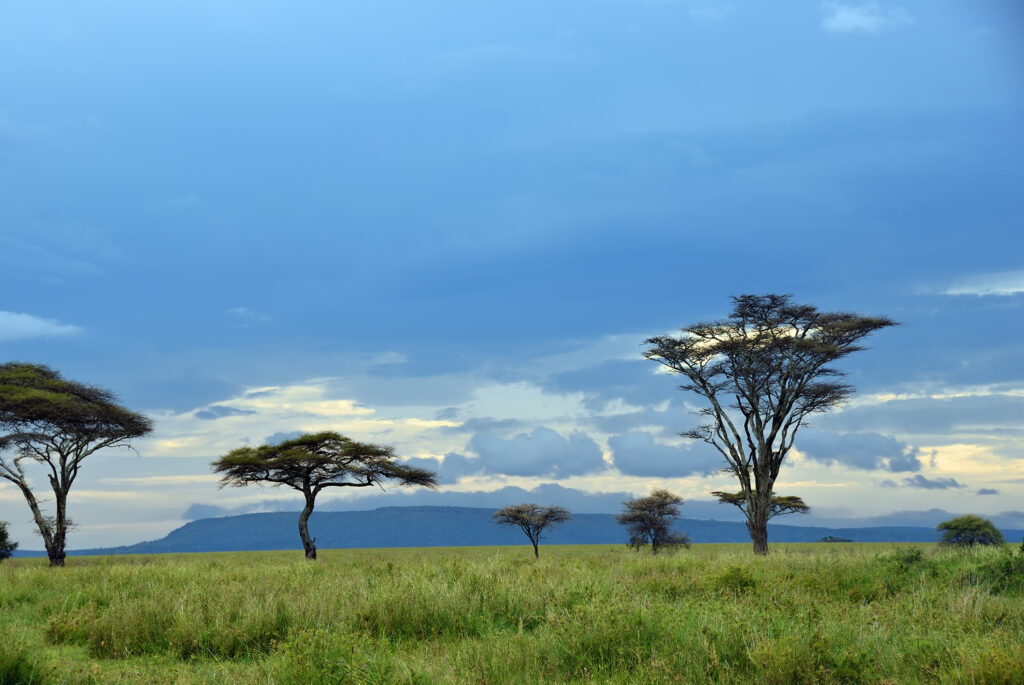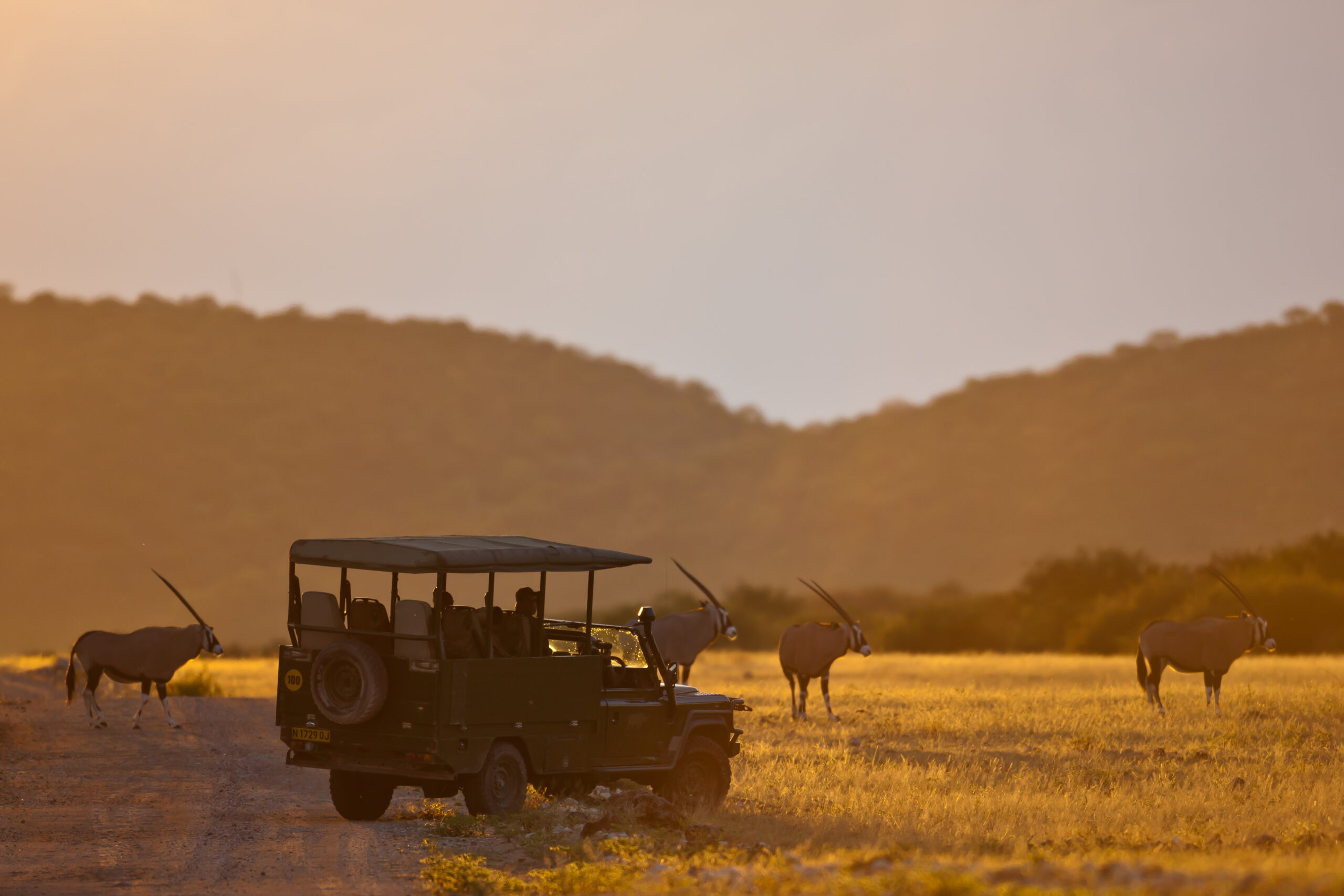The Gritty Details of African Safaris: Getting there, staying there, eating there and more!
Picture a morning sunrise over the Serengeti. Brightly colored lovebirds take to the trees to tweet about the coming day. You look out from your campsite to see a herd of elephants lazily waking up and starting to look for breakfast. Thinking about how you’ll get there? Here’s everything you need for the nitty gritty details of planning your African safari.
Travel to Safari
The many national parks and game reserves in Africa range from easily accessible to extremely remote. Planning your travel to safari starts by weighing factors like cost, accessibility and what you want out of your safari trip. The right amount of money and planning can get you just about anything on safari. In general, there will be two steps to traveling to your safari, first is getting to Africa, the next is getting to the park or starting destination if you are taking a multi-park tour.
Arriving in Africa
If you’re traveling in from another continent, you’ll be arriving at one of the major international airports in Africa like Johannesburg (O.R. Tambo International Airport), Cape Town (Cape Town International Airport) or Nairobi (Jomo Kenyatta International Airport).
JKAI, Nairobi, is the largest airport in East Africa and allows access to the many parks of Kenya, Tanzania and Rwanda like the Masai Mara or Serengeti National Park. If you’re looking to go to any of the parks in South Africa, Johannesburg is your best option. Keep in mind that border crossing once you arrive in Africa will mean new sets of laws and new currencies.
Getting to Safari
From whichever international airport you fly into, some parks are accessible by bus or car, and others require a regional flight or even a charter plane to get to them. This is where you start customizing your trip based on the experience you want. There are some safari tour services that will pick you up from the airport, handle your bags, border crossings and transportation all the way through to your destination and drop
you back off in a major city once you are done. Others will book directly from the park, requiring you to get there on your own. Getting to your African safari is probably the biggest commitment of the trip, so make sure you take enough time to get the most of your experience while you are there. Most safari experts recommend taking at least two weeks for your trip.
Lodging on Safari
Nothing makes you feel more like you are on safari like staying the night in the national park and waking up in the bush or on the savannah. There are plenty of accommodations in the major safari parks, ranging from backcountry camping to five star resorts. The classic safari experience is a permanent lodge or tented camp, which keeps you in a comfortable tent close to the nature surrounding you, but adds the comforts of a permanent accommodation. These permanent tented camps have restaurants, full service on site staff and the full amenities of a hotel.
From the permanent lodge you can go up or down in comfort level. Options include camping in tents, whether you set them up yourself or have a safari tour company provide them and set them up for you. There are mobile tents or temporary tents, which are like the permanent tent camp. However, like the classic game hunts that safaris are based on, they follow the migrations and movements of the animals and are a great way to get closer to the animals you are looking to spot.
On the more luxury end there are luxury lodges and even four and five star resorts that offer premiere privacy and seclusion. These luxury accommodations are also in the heart of the parks, so these lodges are the perfect place to relax and let the animals come to you in the comfort of every luxury imaginable. Whether you choose setting up tents under the stars or ordering room service in the midst of Baobab trees, the experiences you will have on safari will be unforgettable.
Eating on Safari
The experience of local African foods on safari is a real treat. After a long day on the savannah, there is nothing like coming back to a traditional meal of boerewors (South African sausage) cooked on the braai (barbecue). Depending on the kind of tour you book, you can prepare the food yourself, make it in a group with your fellow safari tourists, or allow the local staff to make your meals for you.
In general, expect to eat a selection of local meats (game meat as well as beef and chicken), seafood, rice and local vegetables. You will probably see things like ostrich eggs, crocodile meat, antelope, and even warthog on menus. For can’t-miss dishes, mornings on safari are just better with a cup of Rooibos tea and some rusks (dry biscuits) to soak in it. Traditional dishes like Biltong (meat cured with vinegar) or Pap & Sheeba are also regional staples that you simply have to try.
As you’re eating on safari, don’t worry, the antelope on your plate did not come from the game reserve you are staying on, it came from farming lands nearby. Also, rest assured that chefs on safari reserves can accommodate any dietary restriction with enough advance notice, but remember to keep an open mind. Local delicacies are part of the experience, and trying the regional cuisine will allow you a fuller experience of your safari.






Leave a Reply